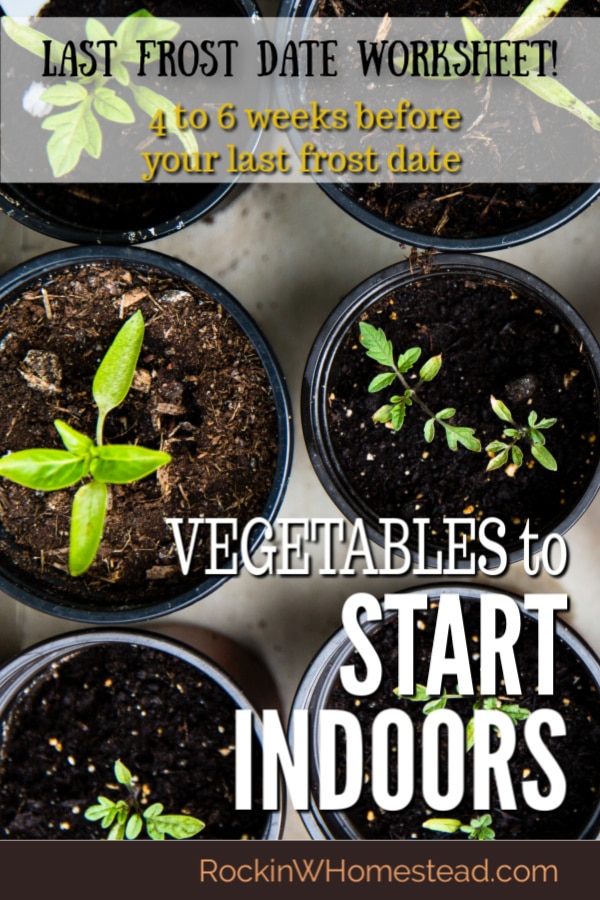There are many joys and benefits to be gained by starting your own garden indoor from seed. The toughest part is knowing what to plant at specific times so the seedlings are not held too long indoors. Here’s the third installment of our “What to Plant” series.

Be sure to read the other articles in this series – What to plant 8 to 12 weeks before your last frost date, what to plant 6 to 8 weeks before your last frost date and what to plant 3 to 4 weeks before your last frost date.
Once you get to the point where your garden will be ready for planting in 4 to 6 weeks, things really start to get intense. You might even find that seedlings are taking over the kitchen table and every available sunny windowsill.
What to Plant Indoors 4 to 6 Weeks Before Your Last Frost Date
Broccoli – This member of the brassica family produces best in cool climates. In hot weather, it will be plagued with insects and can bolt suddenly. For the best success, gardeners in the South will plant this in the fall.
Brussels sprouts take quite a long to mature, from 100 to 120 days, and perform best in cool weather. Get a jump by planting them indoors and provide constant, even moisture throughout the growing season. Established plants will tolerate fall frost.
Cabbage doesn’t like sudden temperature changes or to be stressed by irregular watering schedules. Plats will mature on average between 60 and 85 days from planting. If you missed sowing indoors, they can be started directly in the garden in March through June, but yields will be light once the temperature warms.
Cauliflower is the fussiest member of the brassica family. The soil must be deep and rich and it must never suffer drought conditions. Transplant the seedlings when they are 4 to 5 weeks old or growth will be stunted.
Collards and Kale are cool-season crops that perform best in early spring and fall. Once the plants are established these plants are so hardy they can withstand frost to 0°F. Supplement with fertilizer to help yields and mulch to keep the soil surface moist.
Kohlrabi performs best in cool weather. Transplant outdoors when the starts have 6 to 8 true leaves and nighttime temps remain above 40F.
Lettuce can be planted outdoors as soon as the plants have formed 2 to 3 true leaves and the soil can be worked. For an extended harvest, plant seed every 2 to 3 weeks. Consistent water is critical. Protect from slugs.
Onions regulate their stages of growth by day length, so be sure you purchase the right seeds for your climate. Germination can take anywhere from 4 to 21 days. Seed life is short (1 to 2 years) so make sure your seed is fresh.
How do I know my last frost date?
I’ve created a handy worksheet to help you determine your last frost date and how to use this to know when you should start specific seeds indoors. This will also help you decide on the best time to plant them outside in the garden.
Get the Frost Date Planting Worksheet
Don’t worry if you’ve missed the seed starting date, there is often still a window of time to get started. If it is not too far gone, start the seeds anyway. Most cool-weather crops can be planted in succession until the days get very hot during the summer months. If it is getting on in the season, purchasing starts from the local nursery may be your best option this year.
The Last Frost Date Planting Worksheet works to help you know when to plant certain vegetables and herbs in your garden without danger of frost damage. Enjoy!
Now that you’ve determined your last frost date, what should you plant indoors 4 to 6 weeks before last frost date?


[…] What to plant 4 to 6 weeks before your last frost date […]